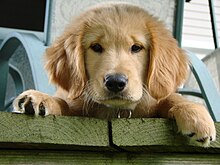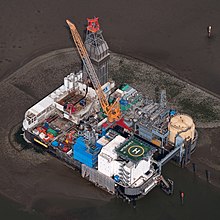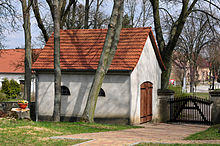Right to the picture of one's own cause

A right to the image of one's own thing does not exist in German-speaking countries or only very rarely and under certain circumstances. The possession or ownership of a thing alone does not constitute a right to prohibit third parties from depicting this thing through photography, painting, etc.
Works of art
The ownership of an object protected by copyright (painting, sculpture, building, etc.) does not include any claim to copyrights in this object. The copyright remains with the creator of the work of art without exception, but the author can grant third parties full rights of use . From a copyright point of view, the owner cannot decide whether photos of his work of art are published. If the object is in private rooms (apartment, museum, ...), taking photos can be prohibited or made subject to a charge, with reference to house rules .
Maintains an owner, rights of the author's work to possess, he commits a copyfraud if it is only the owner of the work, but not the copyright owner. For example, the owner of a picture by Pablo Picasso alone has the material rights to the painting, that is, he can sell it and, to a limited extent, produce and distribute images within the framework of the sale. However, Picasso's heirs hold further rights of reproduction.
In Germany, freedom of panorama regulates that protected buildings, sculptures and similar works that are permanently in public space can be photographed by anyone and that the photos can be used for any purpose. One of the essential characteristics is durability. The artist Christo , citing the “temporary character” of the work of art, fought a corresponding omission against a Berlin postcard publisher before the Federal Court of Justice . He had sold postcards with motifs of the wrapped Reichstag without the artist's consent.
Legal situation in the EU
Throughout Europe, Directive 2001/29 / EC of the European Parliament and of the Council of May 22, 2001 on the harmonization of certain aspects of copyright and related rights in the information society in Article 5 Paragraph 3 Letter h created the possibility for the member states to Copyright laws allow the depiction of "works of architecture or sculptures that were made to remain in public places" free of charge. Due to this EU directive, some states have introduced the freedom of panorama that did not previously exist in their countries.
Legal situation in Germany
It is often wrongly assumed that you can in principle forbid strangers from taking photos of your own house, cars, etc.
In its “Friesenhaus” decision of 1989, the Federal Court of Justice ruled that there is no right to the image of one's own thing that goes beyond the authority of the owner to deny others access to it. Property owners do not have a defense claim from § 903 , § 1004 BGB , as long as there is no violation of personal rights (such as a violation of the highly personal area of life through picture taking ).
A photographer who has to enter a non-publicly accessible (private) property for his photo must obtain the consent of the owner or rights holder for the exploitation . This was decided by the BGH in its 1974 “Schloss Tegel” decision.
According to German law, it is also not permissible to peek over walls or to overcome other obstacles or to use aids such as telephoto lenses , ladders or even aircraft to penetrate the protected privacy of a person (BGH, judgment of December 9, 2003, Az. VI ZR 373/02, aerial photographs of the holiday home ). However, this only affects the privacy of people, not the pictorial representation of buildings, parks, etc.
As stated in the decisions of the Higher Regional Court of Brandenburg of February 18, 2010 on the question of photographing Prussian palaces and gardens, “public land” can also be that of private property. In amending the judgments of the Potsdam Regional Court of November 21, 2008, the Higher Regional Court of Brandenburg emphasized that it makes a difference whether the photos to be exploited are created in “any time publicly accessible space” or - which would then be inadmissible - “for the (Private) properties only accessible to the public with their own house rules and additional information on a restriction or ban on photography, restricted access and / or admission controls "etc.
In its revision rulings of December 17, 2010 - Sanssouci I - the BGH differentiated in the sense of its “Schloss-Tegel” ruling: Even if the private property in question is accessible for viewing at any time free of charge, the commercial exploitation of photos and also the free Entering the property for commercial purposes, e.g. B. commercial film and photo recordings, denied or by the consent of the owner or rights holder linked to a fee, d. H. the issuing of a fee-based “ photo permit ”.
Private properties with their buildings, factories, airfields, etc. can therefore usually be photographed without prior permission and the images can also be used commercially as long as the photographs are taken from public land. There can also be public land if it is private property, but it is publicly accessible at all times. In the case of works of architecture protected by copyright, the so-called panorama freedom of § 59 UrhG applies, according to which photography from public grounds and the publication of such photographs are also permitted without permission in these cases; In doing so, however, the architect has the right to be given names and sources from §§ 13 and 62 UrhG and the prohibition of changes and distortions according to §§ 14 and 62 UrhG. Furthermore, the commercial use of the photos taken from a publicly accessible private property can be linked to a (possibly chargeable) photo permit.
For military objects and comparable facilities there are restrictions based on special law ( Section 109g (1) of the Criminal Code , Section 5 (2 ) of the Protection Area Act ).
Legal situation in Austria
In Austria the freedom of panorama is more extensive than in the rest of Europe. § 54 z 5 ÖUrhG regulates the free use of pictures on works of architecture : In addition to the exterior of a building, the Supreme Court also considers interior parts of a building, such as the stairwell, the courtyard, the vestibule, individual halls and rooms, in the same way as of that includes freedom of panorama, as well as interior design, such as furniture or room furnishings, if they are part of the work and are depicted in this way.
With regard to other more or less publicly viewable things, it should be said that the right to one's own picture in Austria basically prohibits the unauthorized creation of a portrait of a person even without the intention of disseminating it. In general, the protection includes being exposed through the dissemination of one's portrait, being exposed to the public in private life or if the type of image use can give rise to misinterpretations or has a degrading or degrading effect, and is weighed up on a case-by-case basis. The other protection of privacy (this also includes the depiction of the things in the living area, such as the garden area or interior furnishings) is handled accordingly. In addition, the data protection regulations ( European Data Protection Directive as well as Data Protection Act ) apply in relation to identification (for example with regard to the car and in particular the license plate).
Due to the comprehensive and strict regulation, for example Google Street View in Austria is only available in a few selected public places despite freedom from panorama. The requirements for this service drawn up by the Data Protection Commission in 2010 are considered a model case for outdoor shots in Austria. For example, in front of churches, hospitals or women's shelters, not only the face but also the whole body should be made unrecognizable or even private gardens should be retouched that cannot be seen by normal strollers.
Legal situation in Switzerland
Recordings of people are considered protected; Objects of the people are not covered by the case law.
Photos of vehicles with recognizable license plates may not simply be published in Switzerland, as in most cantons the owner of a vehicle can also be determined by third parties. This creates the possibility of unwanted contact with the owner.
See also
- Freedom of panorama
- Violation of the very personal sphere of life through picture taking
- General personal rights
- Right to your own picture
- Portrait (right)
- Image rights
Web links
Germany:
Footnotes
- ↑ Dreier, Schulze, § 95 Rn. 3; Möhring / Nicoloni-Gass, § 59 Rn. 14; Schricker / Löwenheim-Vogel § 59 Rn. 9 .; Schulze, FS Ullmann, p. 95.
- ↑ Regional Court of Kassel, May 10, 2007 - Az .: 1 T 75/07 - "Publication of license plates on the Internet"
- ↑ Photographing and publishing of license plates - what is allowed on www.rechtambild.de; accessed: February 11, 2016
- ^ BGH, judgment of December 9, 2003, AZ: VI ZR 373/02, - aerial photographs of the holiday home
- ↑ § 109g StGB
- ^ Amendment of the Aviation Act ( Memento of September 24, 2015 in the Internet Archive )
- ↑ RGSt 40, 122, 126f; Gerstenberg p. 156; Schricker / Löwenheim-Vogel § 59 Rn. 9.
- ↑ OLG Cologne (GRUR 2003, 1066 f. - "Wayang figures")
- ^ Judgment of January 24, 2002, Az. I ZR 102/99, Wrapped Reichstag . accessed on February 15, 2016.
- ↑ German version at eur-lex.europa.eu (PDF), accessed on July 3, 2011.
- ↑ BGH, GRUR 1990, 390 f., Friesenhaus
- ↑ Friesenhaus . Federal Court of Justice ( Wikisource )
- ^ Schricker : Copyright Comment . 3rd edition p. 1159 ff.
- ↑ BGH, September 20, 1974 - I ZR 99/73
- ^ Tegel Castle . Federal Court of Justice ( Wikisource )
- ↑ Brandenburg Higher Regional Court, February 18, 2010 - 5 U 12/09
- ↑ Brandenburg Higher Regional Court, February 18, 2010 - 5 U 13/09
- ↑ Higher Regional Court Brandenburg, February 18, 2010 - 5 U 14/09
- ^ Judgment of the Federal Court of Justice of December 17, 2010 - V ZR 44/10 (Sanssouci I) - in favor of the Prussian Palaces and Gardens Foundation .
- ↑ Dreier / Schulze , Copyright Act, 4th edition 2013. Section 59 Rn. 10 ff .; LG Mannheim, judgment of February 14, 1997, Az. 7 S 4/96, GRUR 1997, 364.
- ↑ OGH 4Ob106 / 89; 4Ob80 / 94 .
- ↑ a b c Clemens Thiele: Unauthorized image capture and its distribution on the Internet - Does Austria need its own paparazzi paragraph? In: RZ , 1/2007, pp. 2–17, eurolawyer.at (PDF).
- ↑ No Google Street View for Austria . In: Kleine Zeitung online, August 17, 2014.
- ↑ Gitti Hug: Right on your own picture. (PDF; 191 kB) Presentation at the LES-CH license weekend, 20.-22. September 2002; on altenburger.ch




